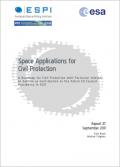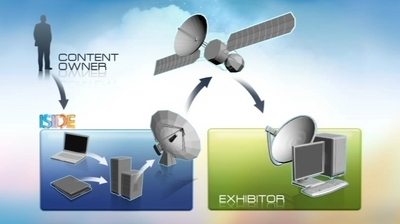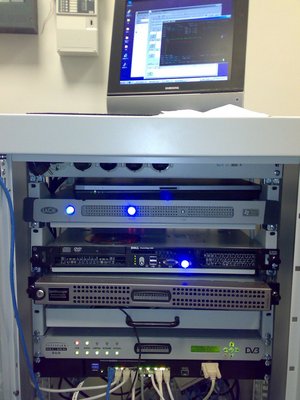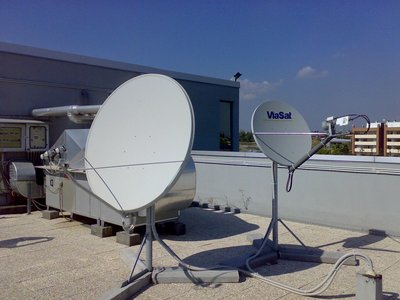ESPI/ESA Report on "Space Applications for Civil Protection" available online
 The report, entitled Space Applications for Civil Protection provides a roadmap for Civil Protection with particular interest in SatCom and has been published as a contribution to the Polish EU Council Presidency 2011. It intends to highlight a potential way forward in improving the overall operational capabilities of European Civil Protection agencies through the use of satellite-based services. It represents a joint effort of the European Space Policy Institute (ESPI), the IAP Ambassador Platform for the CEE region (APCEE), and ESA.
The report, entitled Space Applications for Civil Protection provides a roadmap for Civil Protection with particular interest in SatCom and has been published as a contribution to the Polish EU Council Presidency 2011. It intends to highlight a potential way forward in improving the overall operational capabilities of European Civil Protection agencies through the use of satellite-based services. It represents a joint effort of the European Space Policy Institute (ESPI), the IAP Ambassador Platform for the CEE region (APCEE), and ESA.
The report reflects the main issues which were discussed during a workshop organized by ESPI, together with the Austrian Federal Ministry of the Interior (BM.I), the Austrian Aeronautics and Space Agency, and ESA on 5/6 May 2011. It aims at identifying user needs and gaps in existing services as well as the most appropriate way forward for generating space-based, user-driven activities creating direct benefit to the European Civil Protection community. The report underlines that dedicated efforts are needed to enhance interoperability, availability, cost effectiveness, and best practice of the Civil Protection community based on satellite-based services. For the time being, no institutional European mechanism has been established to allow the European disaster management community to have efficient and simple access to space-based systems. In addition specific needs of the disaster management community have not been clearly articulated to enable the development of appropriate resources and services by the space industry.
The study is structured into main parts. The first part provides an overview of the current status of Civil Protection (CP) in Europe, including the drawbacks of the current systems and ESA's past user-driven activities to overcome these shortcomings. The second part delineates the national strategies and perspectives of CP agencies of selected European States with the focus on satellite-based applications that were presented during the workshop. Based on the summary of the roundtable discussions, current shortcomings regarding the utilization of satellite-based services and the requirements of the CP community are identified. The third part of the study analyses the current international and European regulatory framework based on the needs and requirements of the Civil Protection community. It highlights relevant aspects that would guarantee legal certainty and an effective mechanism to respond to disasters in a timely and flexible manner. Moreover it reviews recent developments at EU level with respect to the review of the EU Civil Protection legislation. Finally, recommendations to improve the overall operational effectiveness of CP users through the use of space-based systems SatCom are provided and concrete measures are outlined.
For further information please contact:
Erich Klock
Manager of the IAP Ambassador Platform for the CEE region
European Space Policy Institute (ESPI)
Email: erich.klock@espi.or.at




 As cinema owners worldwide begin to embrace new digital technologies via satellite, audiences are being given more ways to enjoy an evening at the movies.
As cinema owners worldwide begin to embrace new digital technologies via satellite, audiences are being given more ways to enjoy an evening at the movies.







 An operational pilot system connecting some isolated areas in both Western and Eastern countries of the Sub-Saharan Africa will be defined and implemented together with medical centres of excellence. The final goal will be to pave the way for a comprehensive eHealth system including clinical services and eLearning as a contribution to a future pan-African network for telemedicine, in line with the TTF objectives.
An operational pilot system connecting some isolated areas in both Western and Eastern countries of the Sub-Saharan Africa will be defined and implemented together with medical centres of excellence. The final goal will be to pave the way for a comprehensive eHealth system including clinical services and eLearning as a contribution to a future pan-African network for telemedicine, in line with the TTF objectives. SAHEL intends to place users at the forefront of the activity. Correspondingly the project will start with an extensive survey lasting six months to retrieve the user needs and service requirements in the domain of health care services in the relevant sub-Saharan Africa countries. For this purpose, a specific questionnaire has been created and will be broadcasted in the following weeks to all key African stakeholders, organisations, health workers and potential users which can provide information about healthcare facilities. SAHEL key for success is to accurately meet the user needs. Consequently it will need to collect a comprehensive set of user driven demands in order to build a suitable telemedicine platform capable of answering satisfactorily to the needs of African citizens.
SAHEL intends to place users at the forefront of the activity. Correspondingly the project will start with an extensive survey lasting six months to retrieve the user needs and service requirements in the domain of health care services in the relevant sub-Saharan Africa countries. For this purpose, a specific questionnaire has been created and will be broadcasted in the following weeks to all key African stakeholders, organisations, health workers and potential users which can provide information about healthcare facilities. SAHEL key for success is to accurately meet the user needs. Consequently it will need to collect a comprehensive set of user driven demands in order to build a suitable telemedicine platform capable of answering satisfactorily to the needs of African citizens.